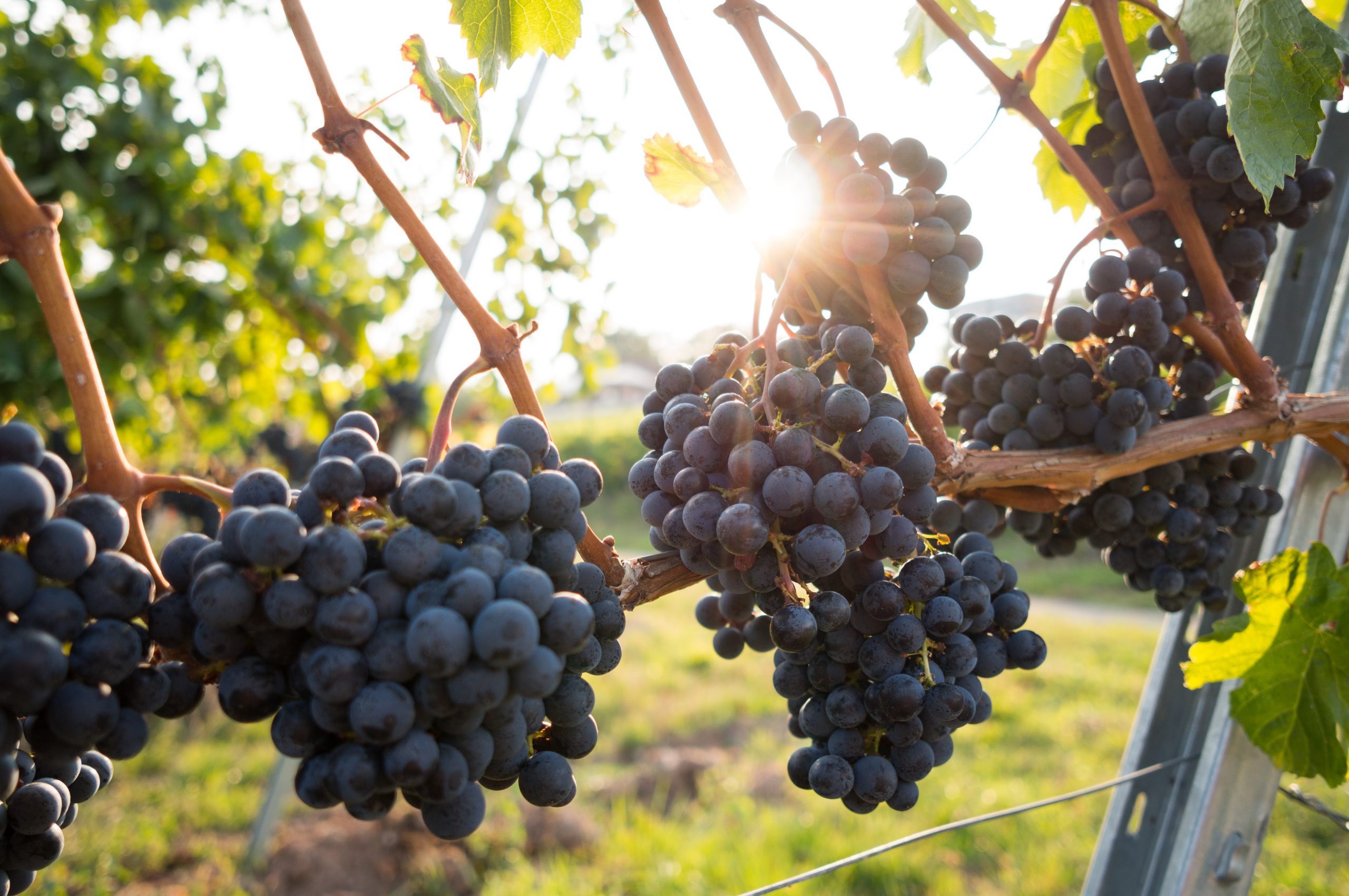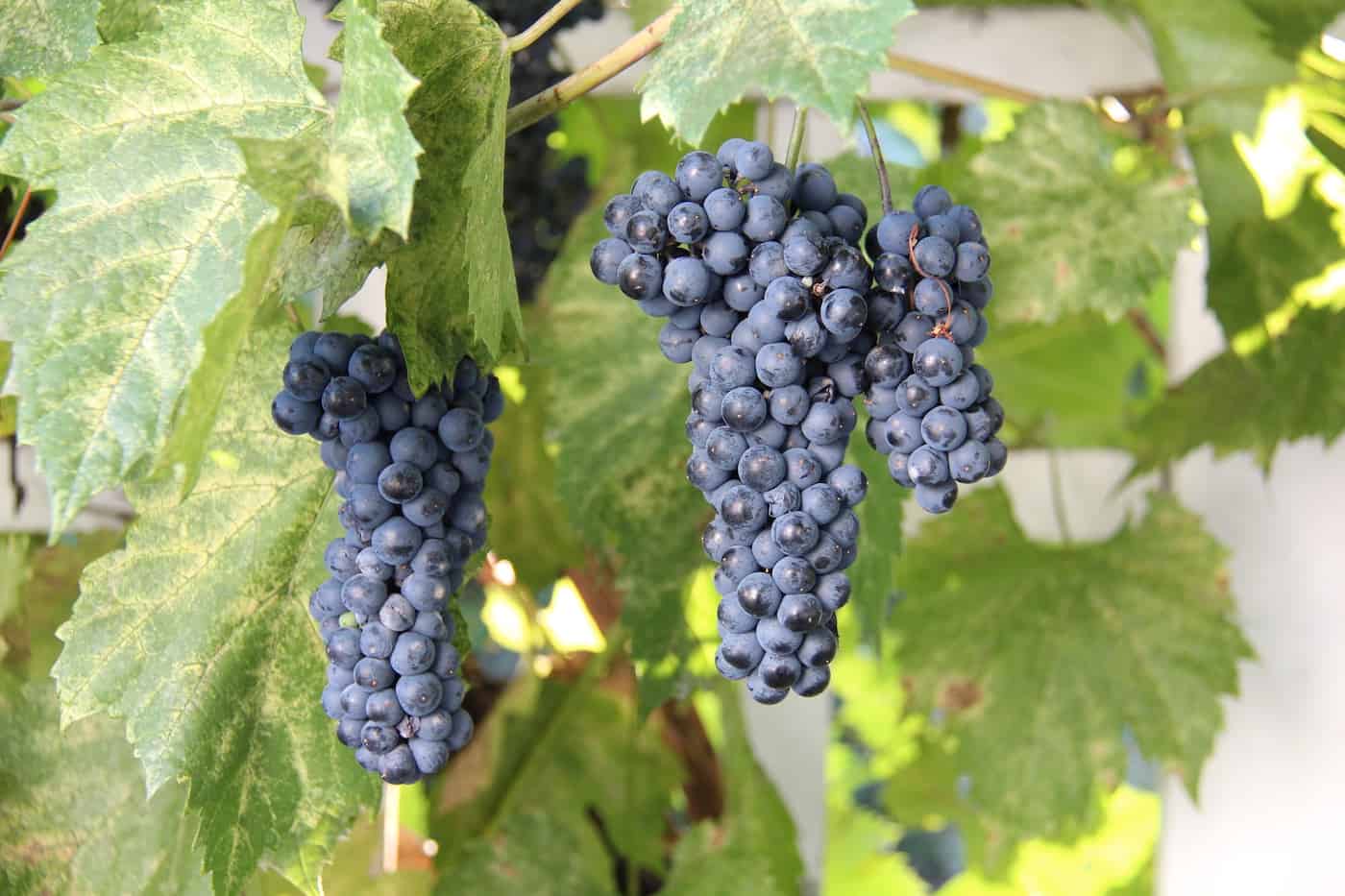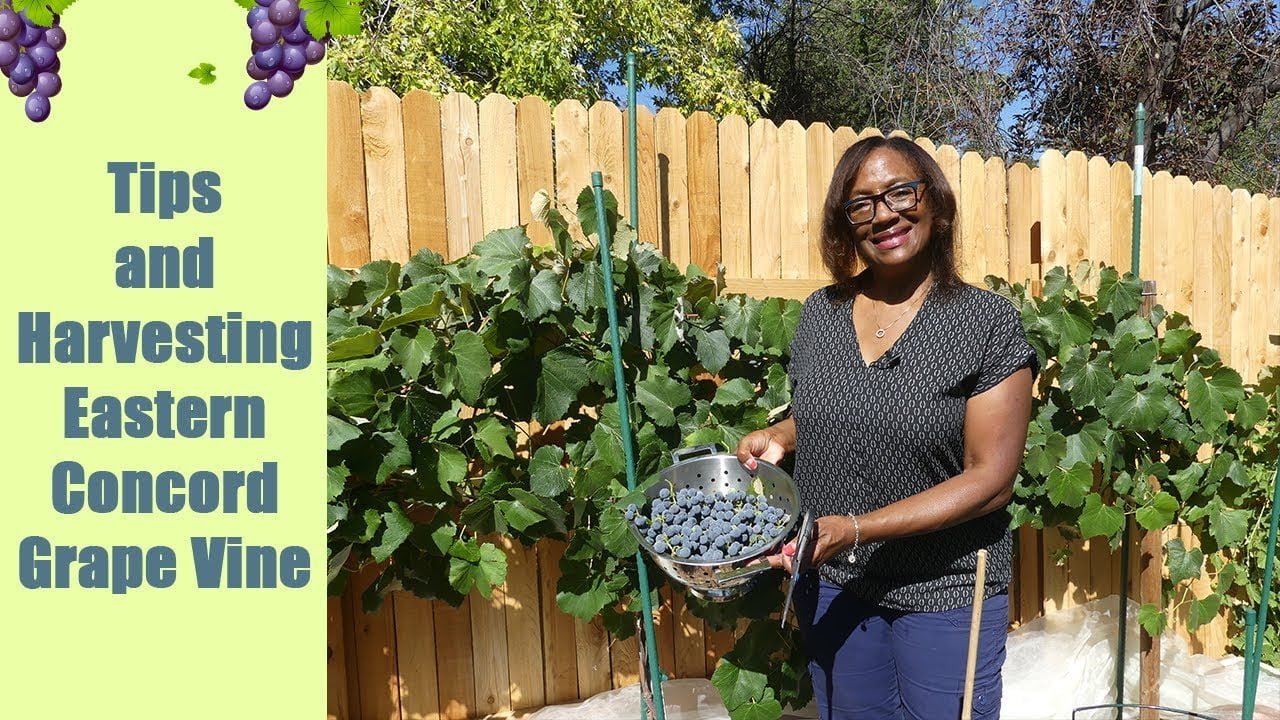In this informative article, you will gain valuable insights on how to successfully plant Concord grapes, a popular variety known for its exceptional taste and versatility in wine-making. With step-by-step guidance and expert tips, you will learn the essential techniques to ensure a thriving vineyard. Whether you are a novice or an experienced gardener, this article provides you with the tools and knowledge necessary to cultivate delicious and bountiful Concord grapes. So, let us now explore the intricacies of planting Concord grapes and embark on an exciting journey to create your very own vineyard.

Preparing the Soil
Choosing a location
When choosing a location to plant your grapevines, it is important to consider several factors. Grapes require full sun exposure for optimal growth and fruit production, so select a spot that receives at least 6 to 8 hours of direct sunlight each day. Additionally, ensure that the chosen area has good air circulation to prevent the build-up of moisture, which can lead to diseases in the plants. Lastly, consider the proximity to structures or other plants that may cast shade on the grapevines.
Testing the soil
Before planting your grapevines, it is crucial to test the soil for its pH level and nutrient content. Grapes prefer slightly acidic soil with a pH range of 5.5 to 7.0. Conduct a soil test by obtaining a soil testing kit or sending a sample to a local agricultural extension service. This will help you determine if any amendments are needed to adjust the pH and ensure proper nutrient levels for healthy grape growth.
Removing weeds and grass
Clearing the planting area of weeds and grass is vital for the successful establishment of grapevines. Weeds and grass compete with grapevines for nutrients, water, and sunlight, which can hinder their growth. Prior to planting, manually remove any visible weeds and grass from the area. You can use a gardening tool like a hoe or hand cultivator to carefully uproot them from the soil. This step will help create a weed-free environment for your grapevines to thrive.
Improving drainage
Ensuring proper drainage in the planting area is crucial for the health of grapevines. Poor drainage can lead to waterlogged soil, which can cause root rot and other diseases in the plants. To improve drainage, amend the soil with organic matter such as compost or well-rotted manure. This will help to aerate the soil and promote better water movement. Additionally, consider incorporating raised beds or mounds to further enhance the drainage capabilities of the planting area.
Getting the Right Equipment
Gardening gloves
Gardening gloves are an essential tool for anyone working in the garden, including when planting and caring for grapevines. They provide protection for your hands, preventing blisters, cuts, and contact with harmful substances. When selecting gardening gloves, choose a pair that is comfortable, breathable, and has a good grip. This will ensure that you can handle the soil and plants with ease while keeping your hands safe.
Pruning shears
Pruning shears are necessary for maintaining the health and shape of your grapevines. They are used to trim away unwanted or dead growth, promoting better airflow and preventing the spread of diseases. When selecting pruning shears, opt for a high-quality pair with sharp blades. This will ensure clean and precise cuts, minimizing the risk of damage to the plants.
Shovel
A sturdy shovel is a must-have tool for planting grapevines. It is used for digging proper holes for the vines and moving soil. When choosing a shovel, look for one with a strong handle and a sharp, durable blade. This will make the process of preparing the soil for planting much more efficient and effective.
Grapevine trellis or support system
To support the growth of grapevines and help them reach their full potential, it is important to provide a trellis or support system. This helps the vines to grow vertically, maximizing sunlight exposure, airflow, and fruit production. Depending on your preferences and available space, you can choose from various trellis designs, including vertical shoot positioning (VSP), high wire systems, or pergolas. Ensure that the trellis or support system is sturdy and can withstand the weight of the growing vines and fruit clusters.
Selecting and Purchasing Grapevines
Choosing healthy grapes
When selecting grapevines, it is essential to choose healthy plants to ensure successful growth. Look for vines with vibrant green leaves, sturdy stems, and well-developed root systems. Avoid plants with yellow or brown leaves, as this could indicate disease or nutrient deficiencies. Inspect the entire plant carefully and choose the ones that appear healthy and free from any visible signs of pests or diseases.
Determining the variety
Consider the variety of grapes you wish to grow before purchasing the vines. Different grape varieties have specific characteristics such as taste, color, and growth habits. Some varieties are better suited for wine production, while others are more suitable for fresh consumption or jams. Research the available grape varieties and select the one that best suits your preferences and growing conditions.
Purchasing from a reputable nursery
To ensure that you are getting healthy and high-quality grapevines, it is recommended to purchase them from a reputable nursery or garden center. Nurseries often have a wide selection of grape varieties to choose from, and their staff can provide valuable advice on plant care and cultivation. Look for nurseries that specialize in fruit trees and grapevines, as they are more likely to have knowledgeable staff and offer plants that are specifically suited for your region.
Planting the Grapevines
Preparing the grapevines
Before planting, inspect the grapevines and trim any damaged or diseased parts. Remove any broken or dead branches and ensure that the main stem is intact. If the roots appear too long, trim them slightly to encourage new growth and prevent tangling. Soak the vines in a bucket of water for a few hours before planting to rehydrate them.
Digging a proper hole
When planting grapevines, it is important to dig a proper hole that is wide and deep enough to accommodate the root system. A good rule of thumb is to dig a hole that is twice as wide and deep as the root ball. This provides ample space for the roots to spread out and establish themselves properly. Use a shovel to dig the hole, breaking up any compacted soil in the process.
Adjusting soil pH and adding compost
Once the hole is dug, assess the pH of the soil and adjust it if needed. If the pH is above the preferred range of 5.5 to 7.0, you may need to add soil amendments such as elemental sulfur or aluminum sulfate to lower the pH. Conversely, if the pH is below the desired range, you can add agricultural lime to raise it. Additionally, enrich the soil by adding well-rotted compost or organic matter. This will improve the soil structure, fertility, and drainage, providing a favorable environment for the grapevines.
Positioning the grapevines correctly
Proper positioning of the grapevines is crucial for their growth and productivity. Place the vine in the prepared hole, ensuring that the graft union (the swollen area where the vine was grafted onto the rootstock) is approximately 2 inches above the soil level. This helps protect the vine from cold injury and encourages vigorous growth. Gently backfill the hole with soil, firming it around the roots to eliminate air pockets. Avoid covering the graft union with soil, as this can lead to rotting or infection.

Watering and Fertilizing
Watering frequency and amount
Proper watering is essential for the establishment and growth of grapevines. Water the newly planted vines immediately after planting to settle the soil and provide hydration to the roots. Afterward, water deeply and thoroughly, ensuring that the entire root zone is moistened. The frequency of watering depends on various factors such as soil type, weather conditions, and vine maturity. As a general rule, water the grapevines deeply once a week, providing around 1 inch of water. However, adjust the watering schedule according to the specific needs of your vines.
Applying fertilizer
Fertilizing grapevines is necessary to provide them with the essential nutrients they need for healthy growth and fruit production. Before applying fertilizer, conduct a soil test to determine the nutrient levels and any deficiencies. This will help you choose the appropriate fertilizer blend and application rate. Typically, grapevines benefit from an annual fertilizer application in early spring, before the growing season begins. Use a balanced fertilizer that contains nitrogen, phosphorus, and potassium, as well as micronutrients. Apply the fertilizer evenly around the base of the vines, being careful not to apply it directly onto the foliage.
Pruning and Training Grapevines
Pruning in the dormant season
Pruning grapevines is a critical practice for maintaining their shape, health, and productivity. The best time to prune grapevines is during their dormant season, usually in late winter or early spring before new growth starts. Pruning helps remove dead or diseased wood, improves airflow, and stimulates the growth of new shoots. Use clean and sharp pruning shears to make clean cuts, ensuring that each cut is made just above a node or bud.
Training the vine
Properly training grapevines is essential for achieving a well-structured canopy, optimal sunlight exposure, and efficient fruit production. The most common training systems for grapevines include the four-arm Kniffin system, the high-wire trellis, and the pergola system. Consult resources specific to your chosen training system for detailed instructions on how to train the vines. Remember to secure the vines to the trellis or support system as they grow, ensuring that they are positioned properly for maximum sun exposure and air circulation.
Managing vine growth
Throughout the growing season, it is important to manage the growth of grapevines to maintain their vigor and prevent overcrowding. Regularly monitor the vines and remove any excessive shoots or suckers that emerge from the base or trunk of the plant. Additionally, thin out the clusters of grapes if they are overly dense, as this promotes better air circulation and reduces the risk of disease. By managing vine growth, you can ensure that the grapevines receive the necessary resources and maintain a balanced canopy.

Managing Pests and Diseases
Identifying common pests and diseases
To effectively manage pests and diseases in grapevines, it is crucial to be able to identify common problems that may arise. Some common pests that can affect grapevines include grape phylloxera, grapevine leafhoppers, and mealybugs. Diseases such as powdery mildew, downy mildew, and gray mold (botrytis) can also pose significant threats to grapevines. Familiarize yourself with the symptoms and signs of these pests and diseases so that you can intervene early and take appropriate measures.
Using organic pest control methods
When managing pests and diseases in grapevines, it is advisable to opt for organic pest control methods whenever possible. This ensures that you minimize the use of harmful chemicals that can negatively impact the environment and human health. Organic methods may include introducing beneficial insects, such as ladybugs or lacewings, to prey upon pests. Additionally, applying organic sprays made from neem oil or insecticidal soaps can help control pests without causing harm to beneficial insects or the grapevines themselves.
Practicing good vineyard hygiene
Practicing good vineyard hygiene is essential for preventing the spread of pests and diseases in grapevines. Regularly remove fallen leaves, pruned wood, and any other plant debris from the vineyard to eliminate potential breeding grounds for pests and fungi. Properly dispose of the collected debris by either burning it or placing it in a composting system away from the grapevines. Additionally, regularly inspect the vines for signs of pests or diseases, and promptly take appropriate measures to control and mitigate any issues that arise.
Harvesting and Caring for Grapevines
Determining the right time to harvest
Determining the right time to harvest your grapes is essential to ensure optimal flavor, sugar content, and acidity. The timing of the harvest varies depending on the grape variety, growing region, and intended use of the grapes. Generally, grapes are harvested when they reach their desired sweetness level and the flavors have fully developed. Different grape varieties have characteristic signs of ripeness, such as color change, flavor intensification, and softening of the fruit. Taste test the grapes regularly to determine when they are at their peak ripeness.
Proper grape handling
To avoid damaging the grapes during the harvest, it is important to handle them with care. Grapes are delicate fruits, and excessive squeezing or rough handling can lead to bruising and damage. When harvesting, gently detach the grape clusters from the vines, using pruning shears if necessary. Place the clusters in shallow containers or baskets to prevent excessive weight and pressure on the lower grapes. Handle the grapes as minimally as possible to preserve their quality and prevent undesirable effects on flavor and texture.
Post-harvest care
After harvesting, it is important to give the grapevines some post-harvest care to ensure their continued health and productivity. Remove any remaining grape clusters or plant debris from the vines, as this can attract pests and diseases. Inspect the plants for any signs of stress or damage and take appropriate actions, such as pruning damaged wood or providing irrigation if needed. Additionally, consider applying a layer of organic mulch around the base of the grapevines to help conserve moisture, suppress weeds, and protect the roots during winter.

Winterizing Grapevines
Protecting grapevines from cold temperatures
Winter weather can pose a threat to grapevines, especially in regions with freezing temperatures. To protect the grapevines from cold injury, consider using physical barriers or covers. One option is to wrap burlap or frost blankets around the base of the vines to shield them from harsh winds and frost. Another method is to construct temporary shelters or tunnels using PVC pipes or wire frames covered with clear plastic. These structures can provide insulation and protect the grapevines from extreme cold.
Mulching around the base
Mulching around the base of grapevines is beneficial in winter as it helps maintain soil temperature and moisture levels, prevents weeds from competing for resources, and protects the roots from freezing temperatures. Apply a layer of organic mulch, such as straw or wood chips, around the base of the grapevines, extending it to a diameter of approximately 2 to 3 feet. This will help insulate the soil and create a favorable environment for the roots during the dormant period.
Pruning for winter dormancy
Pruning grapevines in late winter is a common practice to prepare them for winter dormancy and promote healthy growth in the following season. Remove any damaged, diseased, or dead wood, as these can serve as breeding grounds for pests and diseases. Additionally, prune back some of the vine’s growth to control its size and maintain a balanced structure. Avoid heavy pruning in winter, as this can stimulate late-season growth that is susceptible to frost damage. Prune according to the specific recommendations for your chosen training system and grape variety.
Troubleshooting Common Issues
Yellowing leaves
Yellowing leaves in grapevines can be indicative of various issues, including nutrient deficiencies, water stress, pests, or diseases. Conduct a thorough inspection of the affected plants to identify the underlying cause. Nutrient deficiencies can be addressed by applying the appropriate fertilizers or soil amendments. Proper watering and irrigation practices can alleviate water stress. If pests or diseases are the cause, follow the recommended pest control methods or consult a local expert for guidance.
Wilting vines
Wilting vines can be a sign of water stress or diseases such as root rot. Assess the soil moisture and adjust the watering schedule accordingly. Ensure that the vines are receiving adequate water, especially during hot and dry periods. If the wilting persists, it may be necessary to inspect the root system for signs of rotting or damage. If root rot is suspected, consult a professional or your local agricultural extension service for diagnosis and treatment recommendations.
Poor fruit production
If your grapevines are not producing fruit or the fruit production is low, several factors may be at play. Insufficient sunlight exposure, improper pruning, nutrient deficiencies, excessive fruit load, or pest and disease issues can all contribute to poor fruit production. Evaluate each of these factors and make the necessary adjustments. Ensure that the grapevines are adequately trained and pruned to allow for optimal fruiting. Address any nutrient deficiencies through appropriate fertilization. Consider thinning out excessive fruit clusters to reduce the load on the vines, and promptly address any pest or disease problems.
By following these comprehensive steps and guidelines, you can successfully plant and care for grapevines. With proper preparation, equipment, and knowledge, you will be rewarded with healthy, productive vines that yield delicious grapes year after year.



